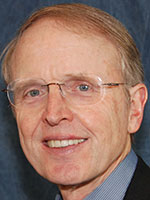Opinion: HOS Rulemaking Based on Bad Research Method
Here’s a nightmare scenario for you: Imagine if the government used a completely spurious and unscientific research method to study truck safety and driver fatigue. The data generated was unrelated to serious crashes and to drivers falling asleep at the wheel, but that same data was the principal basis of hours-of-service regulations imposed throughout the trucking industry. A really bad dream, right?
I believe that nightmare scenario is true.

Knipling
The main truck safety research method used by the Federal Motor Carrier Safety Administration is the Naturalistic Driving (ND) Mixed Safety Critical Event (SCE) method. In these types of studies, volunteer drivers perform maneuvers such as swerving, hard braking, lane drifts and other close calls, which are recorded by sensors and then mixed together to form event datasets supposedly representative of harmful crashes and/or driver performance deterioration. This method has been dominant in federal research for the past 10 years, and its data has played a critical role in pushing through hours-of-service regulations.
However, it’s not true science.
Here’s how science is supposed to work. You start with a target phenomenon or problem, such as serious truck crashes. Then you structure observations of the target problem, usually by sampling representative events. FMCSA’s Large Truck Crash Causation Study data collected in the early 2000s, for example, was a nationally representative sample of fatal and injury truck crashes. We can be sure that, within a margin of error, LTCCS data represent the real problem of concern — serious truck crashes.
However, ND Mixed-SCE data are not samples taken from any target problem; the method doesn’t start with serious crashes. Instead, SCE datasets are arbitrary collections of recorded driver maneuvers like swerves and lane drifts. Researchers decide which kind and what proportions of maneuvers to include, mix up a dataset and present the results as if they represent important outcomes. But there’s no link to any significant safety problem. The method explicitly assumes that successful truck driver maneuvers to avoid a crash are causally representative of crashes that actually happen. In other words, success represents failure!
How could this happen? The main culprit is H.W. Heinrich, an industrial safety researcher who 75 years ago proclaimed that accidents of all severities had identical or highly similar “causal mechanisms.” Heinrich believed that causation was independent of consequences. Under this theory, researchers should gather as many minor accidents and operator errors as possible and consider them representative of serious accidents.
Heinrich never studied traffic crashes, but his theory of “identical causal mechanisms” is the explicit and foundational assumption underlying the ND Mixed-SCE method. It was never proven for traffic crashes, and I believe that I have disproven it. My recent publications include a 2017 critique of ND scientific validity published in Transportation Research Record, the journal of the Transportation Research Board. This and other publications prove that traffic crashes are pervasively heterogeneous and that generalizations across crash types or severities are likely to be wrong.
For example, the Large Truck Crash Causation Study showed that falling asleep at the wheel is 12 times more common in at-fault single-vehicle crashes than in multivehicle ones. Crashes of different severities are also markedly different in causation. For example, incidents of driver fatigue are five times greater in fatal crashes than in minor crashes. There’s only one true generalization about traffic crashes: You can’t generalize.
ND studies were the principal basis for FMCSA’s 2011 HOS rulemaking, including the mandatory 30-minute rest break. FMCSA reports from this era contained no information on SCE causal factors, including fatigue. SCE data the agency published in 2016, however, revealed that fewer than 10% of SCEs were causally related to driver fatigue and less than 1% were from drivers falling asleep at the wheel. The bottom line: SCEs are overwhelmingly dissimilar to fatigue crashes. Of the SCEs in the same dataset, 81% were single-vehicle versus about 20% of police-reported truck crashes. The SCE glove doesn’t fit fatigue and it doesn’t fit serious crashes.
FMCSA claims to be measuring driver performance, but SCE rate is strongly confounded by traffic density. SCEs cannot reliably measure driver fatigue if they are so affected by traffic external to trucks and their drivers. FMCSA actually recognized this confounding influence prior to 2011. A 2008 study reported a close correlation between traffic density and SCE rate, but since then FMCSA has ignored traffic confounding in its reports.
Meanwhile, Heinrich has been discredited within his own domain of industrial safety. The National Safety Council has published a book debunking Heinrich and complaining that “his misleading premises continue to be perpetuated.”
All of this pulls the scientific rug out from under SCEs. “Safety Critical Event” is a misnomer. They are not safety-critical. They don’t represent fatigue events and they don’t represent serious crashes. They don’t appear to represent anything important about safety. Yet FMCSA is still spending millions gathering and studying them and readying that research for, potentially, another HOS rulemaking. This is the worst travesty I have seen in my 40 years of traffic safety research.
Ronald Knipling is the author of “Safety for the Long Haul: Large Truck Crash Risk, Causation & Prevention,” for which he received the International Road Transport Union Order of Merit. Safety for the Long Haul Inc., which is based in Arlington, Va., provides safety research, training and management consultation.




